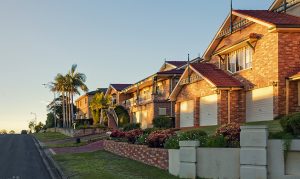Building Certification: How to certify a block of flats with commercial ground or offices?
3 min read
A very common question that has recently been asked again and that therefore is interesting for all building certification.
In the case of two uses in a single building (for example, something as common as a shop on the ground floor and houses on the upper floors), two buildings must be modeled, one for each use.
This is because not only is the typology of the buildings different but also the scale of building certification.

We are going to focus on the building certification of a new plant using Buildcert, which is what could be more complex, in the case of existing buildings it would be similar. Well, the simulation can be solved in two ways:
Model only the areas to be scored.
In this way, the adjacent areas are simulated with the shadows generated by the opaque exterior walls. The objective is to simulate the absence of radiation due to the spaces with the other use. This form has a drawback: the building certification results will be worse as the compactness or form factor of the building is reduced.
Model all areas.
Those that qualify and those that don’t. In the areas that are not qualified, it must be indicated that they are Not Habitable, since it may be that the current user is air-conditioned, but, in the future, it could not be. On the other hand, it is another use and therefore has other hourly patterns. Space can be modeled with adiabatic partitions (without heat transmission) as long as the adjacent spaces separated by these walls have user-profiles and comfort conditions very similar to those of our space, that is as if they were party walls.
In both cases, the transmittance requirements will be the same.
To meet the CTE HE1 requirement, the floor may have to be designed with insulation. Indirectly, this insulation can be the false ceiling, so that the required minimums can be reached without modifying the composition of the floor. The false ceiling should be integrated into the slab as an air chamber of maximum thickness.
As a conclusion, for new buildings and for existing buildings is that commercial premises and homes in the same building must be certified separately, even if all spaces are heated. .
Therefore two certificates, one for the residential part and the other for the commercial one are very good when they are different registry entries with different cadastral references. But have come across a case in which the entire building is owned by a single owner, both homes and commercial premises with a single cadastral reference. If made two different certifications, It will not be able to register both because only one cadastral reference per report is allowed. Well really, in a single report you can now put several cadastral references, but you cannot register two reports with the same cadastral reference. It is time to certify the entire building of one … as possible.
The usual thing will be to carry out a certification of the dwellings at the building level as these will continue to be dwellings throughout the useful life of the building, however the premises from time to time may undergo changes of activity and remodeling, therefore these will be carried out particularly in your moment.
As a single cadastral reference and as a global building, would focus exclusively on the houses.
However, all these phenomena should be consulted with the certifying entities.
The Buildcert Certification team deliver a range of professional services to builders, developers, architects, building designers, home owners and other industry consultants:
- Preliminary Complying Development checks
- Issue of Construction Certificates
- Issue of Complying Development Certificates
- Issue of Occupation Certificates
- Undertake Mandatory Construction Inspections as the Principal Certifying Authority (PCA)
- Provide Building Consultancy and Advice on the Building Code of Australia (BCA)
And the most unusual cases can be clarified by passing the building inspection.





